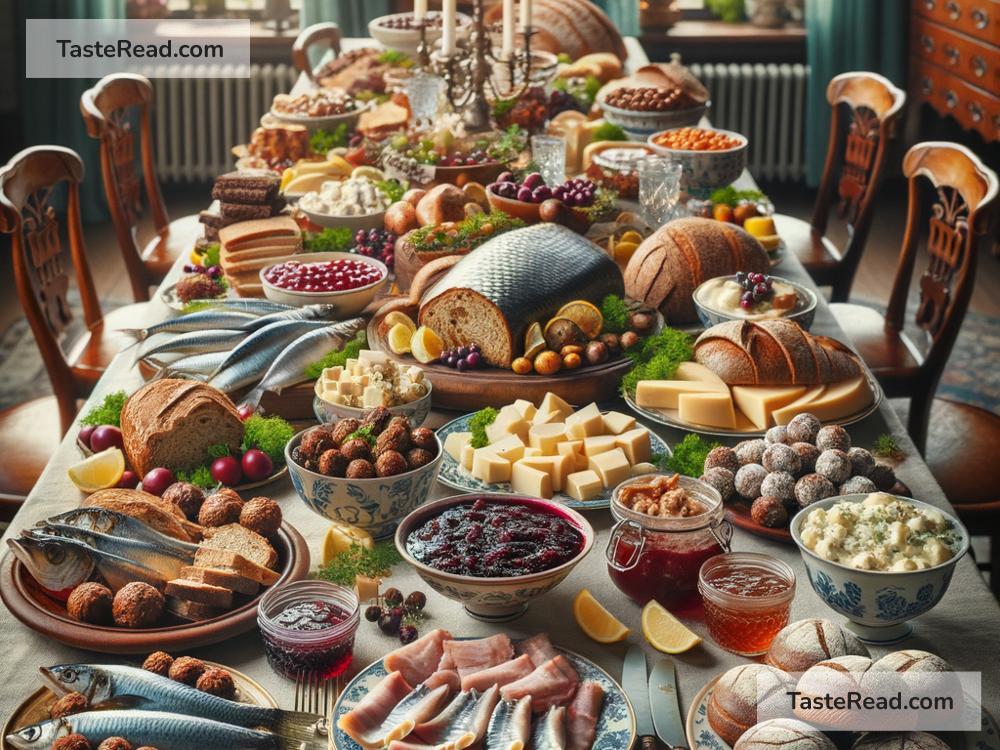How the Swedish Smorgasbord Became a Dining Tradition
When you think about Swedish cuisine, what comes to mind? For many, the image of a smorgasbord, a delightful spread of cold and hot dishes shared with family and friends, is the first thing they picture. This dining tradition, deeply rooted in Swedish culture, has traveled across oceans and found a place in various corners of the world. But how did the smorgasbord become such an integral part of dining in Sweden and beyond? Let’s delve into its fascinating history and evolution.
The term “smorgasbord” literally translates to ‘sandwich table’. Despite its simple name, a smorgasbord is anything but plain. This culinary tradition can be traced back to the Vikings, the seafaring warriors and traders from what is now Scandinavia, who laid the groundwork for what would become one of Sweden’s most cherished dining customs. The Vikings had a habit of gathering before embarking on their voyages, sharing a table filled with various foods. While the early version of smorgasbord was a far cry from what we see today, the core idea of community and sharing a meal was already present.
Fast forward to the 16th and 17th centuries, the smorgasbord started to resemble its current form during special occasions and gatherings among the Swedish elite. Initially, it began as a small spread of bread, butter, and cheese eaten before the main meals, known as the brännvinsbord, which included a selection of spirits like aquavit. This precursor to the modern smorgasbord was a way to whet the appetite for the feast that lay ahead.
As time progressed, so did the smorgasbord. By the 18th and 19th centuries, it had evolved into a much more elaborate affair. The introduction of smörgås, open-faced sandwiches, and the inclusion of various hot and cold dishes transformed the smorgasbord into a meal in its own right. It was no longer just a preamble to dinner but became an occasion to display a bounty of Swedish culinary delights. This transformation aligned perfectly with the Swedish ethos of lagom, a concept that translates to “just the right amount,” reflecting a balance and moderation in Swedish culture and lifestyle.
The smorgasbord truly stepped onto the world stage at the 1939 New York World’s Fair. The Swedish Pavilion’s restaurant offered a smorgasbord, introducing thousands of visitors to this quintessential Swedish tradition. The concept captivated the international audience, enchanting them with the idea of an abundant spread of delicious dishes to sample at one’s own pace. Following the fair, the smorgasbord became a symbol of Swedish hospitality and cuisine, spreading its influence far beyond the borders of Sweden.
Today, the smorgasbord is celebrated not only in Sweden but around the world, especially during holidays and festivities. In Sweden, the most famous smorgasbord is perhaps the julbord, a Christmas buffet loaded with traditional Swedish holiday fare, including pickled herring, smoked salmon, meatballs, and more. The julbord showcases the smorgasbord’s ability to bring people together, sharing in the joy of a meal that caters to various tastes and preferences.
Yet, the essence of the smorgasbord transcends the variety of dishes it offers. It embodies the Swedish spirit of community, sharing, and hospitality. Whether it’s a simple family dinner or a grand holiday feast, the smorgasbord invites everyone to gather around the table, share stories, and enjoy an array of flavors together. This tradition encourages diners to explore and savor each bite, creating an experience that goes beyond the mere act of eating.
In conclusion, the Swedish smorgasbord has come a long way from its humble beginnings to become a treasured dining tradition. Its evolution reflects not just changes in culinary practices but also the enduring values of community and sharing that are central to Swedish culture. Today, as we gather around smorgasbord tables in Sweden or anywhere in the world, we’re not just partaking in a meal; we’re sharing in a tradition that has stood the test of time, inviting us to enjoy the simple pleasures of good food and great company.


